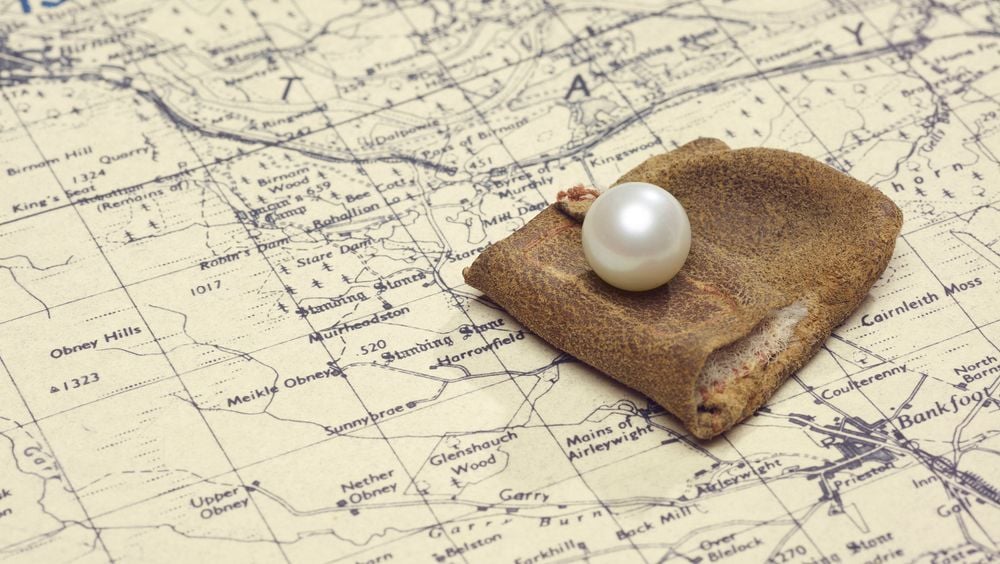
One of the largest freshwater pearls found in Scottish history is heading to auction for the first time, six decades on from its discovery.
Known as the Abernethy Pearl, it is expected to command between $51,000 and $77,000 when it hits the block at Lyon & Turnbull’s sale of the Cairncross Collection on August 21.
Weighing 43.6 grains, the Abernethy Pearl was found in 1967 by William Abernethy, a somewhat legendary Scottish pearl fisherman who died in 2021 and is widely considered to have been the last of his kind.
Abernethy learned to fish for pearls from his father and spent most of his working life traversing the country’s rivers on foot or in small boats. According to a documentary from the 1970s, Abernethy was able to discern whether or not a mussel contained a pearl simply by looking at its size and shape.
The Abernethy Pearl weighs 43.6 grains. Photo: courtesy Lyon and Turnbull.
After discovering the large pearl, Abernethy wrapped it in a dock leaf to prevent it from being scratched and carried it to Cairncross of Perth, a jeweler in the east coast Scottish city. He never revealed where he’d found the pearl, perhaps to prevent others from scouring the location.
Nicknamed “Little Willie” after its discoverer, the pearl is estimated to have been growing for 80 years when it was found, placing it during the reign of Queen Victoria.
Typically smaller than their saltwater counterparts, roughly one in five thousand mussels in Scottish rivers contain a pearl. With Scottish freshwater mussels teetering on the verge of extinction due to overfishing, a pearl fishing ban was introduced in 1998, making it illegal to kill or disturb mussels.
Lyon & Turnbull’s Cairncross Collection auction stems from the jeweler in Perth that was the only business licensed to sell Scottish freshwater pearls. Cairncross of Perth closed in 2023 after a century and a half in business.
“The Abernethy Pearl represents a unique part of Scotland’s natural and social history,” Lyon & Turnbull said in a statement. “There will not be another specimen of its like in our lifetime, and while its unique quality and rarity form a large part of its value; those qualities should also stand as a clarion call to protect and nurture the species and our natural heritage.”
The largest Scottish river pearl ever discovered is the Kellie Pearl, which is set into the Crown of Scotland. It was worn during the coronations of Charles I and Charles II of England and remains on view at Edinburgh Castle.